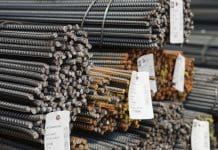John Lacey, Past President of IOSH describes how CDM Regulations are meant to operate, and what qualities a CDM-C should possess.
The 6 European Directives introduced in 1992 created a major change in industry as a whole, and not only the construction industry. The foundation of ‘risk based’ safety was new to industry, although construction engineering had been using risk calculations for years. The fragmentation of the industry during the 1970’s from main contractors employing their own staff to management contractors using sub-contract labour had created a divided situation. Sub-contractors were expected to solve the problems created by clients, designers and main contractors. With legal contracts making it quite clear who was financially liable to foot the bill should things go behind schedule; let alone safety issues.
With the introduction of Construction Design Management (CDM) in 1994/5, (amended in 2001 owing to a challenge in court against the details of the Regulations), the contracting world changed. ‘Principal Contractors‘ (main contractors) now had a duty to ensure health and safety was part and parcel of the whole contract, and they would be held responsible should this not happen. This in itself brought about a major change to safety standards at the sharp end, with incident and fatality rates falling within the industry. Changes to pre-project design safety was not so eager to follow suit.
The introduction of key duty holders, with clearly defined roles and responsibilities, including ‘Planning Supervisors’ (PS) whose job it was to ensure health and safety was taken into consideration at the design and planning stages of a project. Clients and designers also had duties to consider health and safety within their own areas of the projects feasibility and design. The PS had a duty to liaise with both clients and designers. In some cases it worked, but in the majority of projects, their role in reality was more of a clerical nature and added little or no health and safety value to the project.
An opportunity of change – 2007
The review of the 1994/2001 CDM Regulations saw a chance to correct the shortfalls. A change of title from Planning Supervisor to CDM-Co-ordinator actually defined what the duty required. Designers were made more accountable along with clients. The inclusion of health and safety at the construction workplace within the Regulations also ensured that clients and designers had no excuse to not take such things into account when looking at the project at the early stages.
The Co-ordinator, who should be appointed at the very early stages of the project (feasibility/design), is the ideal person to guide both client and designer in considering good safe practice from the projects inception. By early appointment of a ‘competent’ CDM-C the bureaucracy that often resulted previously, can be avoided.
Designers have a clear duty under the Regulations to ensure the client is aware of their duties. In addition, the designer shall not undertake design until a CDM-C is appointed (where the project will be notifiable*). Far too many designers have failed to comply with this requirement, and continue to do so.
Who should the CDM-C be?
When formulating the 2007 Regulations, the Health and Safety Executive (HSE) included a guide to what level of qualifications/competencies people should be expected to look for when appointing and/or dealing with duty holders throughout the project (Appendix 4).
Although a good idea, in some instances this was, and has been taken too literally, and created a mountain of bureaucracy. A number of competency schemes also created even more bureaucracy which did not help the situation. A system of mutual recognition by the major schemes has reduced some replication (SSIP).
The Regulations have been successful where clients have engaged with organisations and/or individuals who, by their demonstrable track record are shown to be competent, professional, and above all ‘team players’. This applies to all the duty holders but in particular the CDM-C.
A good CDM-C will be an integral part of the project support team, not a remotely functioning organisation or individual ticking boxes. Knowledge of the design process is essential, and what is needed to ensure compliance is just a part of the function. They also need understanding of the ‘drivers’ and ‘barriers’ of the project from all aspects, and in particular being fully conversant with the culture of the organisation they are dealing with to be enablers of change. And, they should challenge where necessary the status quo, through good leadership techniques to create the positive movement for good practical health and safety to be embedded within both design and construction.
To be involved at all the stages of the project from feasibility to completion, allows hazards to be identified and addressed. Only those with a clear understanding of the process will add the value that is needed. (*See the modified James Reasons image.)
Legal Compliance: Good practice = good outcomes
In defence of those who have seen CDM as a bureaucratic waste of time, some elements have totally swamped projects with paper systems which add no health and safety or other value. The problem is that should an issue occur unless there is evidence, you have no defence.
The professional will have evidence but only that which shows that good industry/legal practice was followed by clear examples, not mountains of paper and tick boxes.
The appointment of a competent CDM-C onto the team at an early stage is to everybody’s benefit. By being part of the group looking at benefits for clients, constructors, users and maintainers, true value will be added to all projects. A clear line of risk based judgements will also be available should they ever need to be demonstrated.
With a review of CDM 2007 underway at the time of writing this article, it is expected the role of CDM-C will be removed, and co-ordination placed in the hands of the ‘Designer’ to co-ordinate pre-construction activities. The PC will be responsible for co-ordination of the construction phase of a project. This will add a totally different dimension to how risk management will be managed.
Biography
The author of this article, John Lacey, has been working in Occupational Health and Safety for the past 42 years. Working within the construction environment for the last 38 years, his career has seen many changes, both in safe construction processes and in the various facets and professions of the industry as a whole. John has been well placed to view how changes in legislation, and in particular, how industry practices have improved over this period.
A past President of the Institution of Occupational Safety and Health (IOSH) and Chairman of its Construction Group for many years, he has been closely involved with Construction Regulation and in particular the Construction Design and Management
Regulations (CDM) since their introduction in 1994/5, and more recently their review and reintroduction in 2007. Continuing to be involved, John is working with the most recent review of CDM 2007 liaising with members of CONIAC, providing advice and guidance. A Chartered Fellow of IOSH and Hon. Fellow of APS, John is the CEO of Lincsafe (Health and Safety) Ltd and MD of the Directors Safety Alliance. He has worked as a CDM-Co-ordinator on a variety of major projects since the introduction of CDM.
**********
John Lacey
Past President of the Institution of Occupational Safety and Health (IOSH) and former chairman of IOSH’s Construction Group
Tel: 0116 257 3100













![[VIDEO] Using digital twins to simplify complex fire barrier assessment Read more about how Trident Fire Protection utilised digital twin technology to conduct a fire barrier assessment in a complex space with tight areas and poor access in a roof void](https://www.pbctoday.co.uk/news/wp-content/uploads/2024/08/Trident-complex-roof-area-218x150.png)